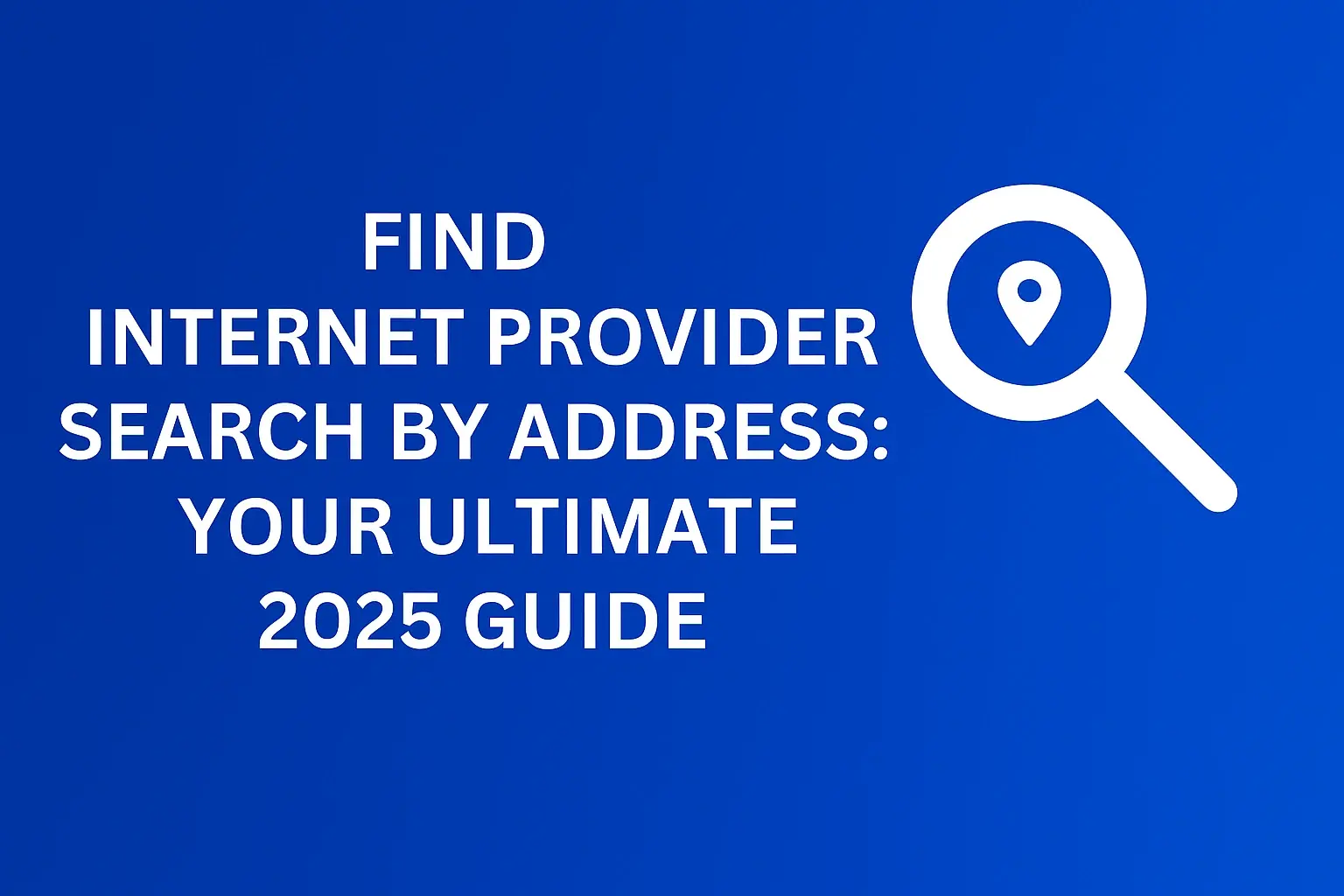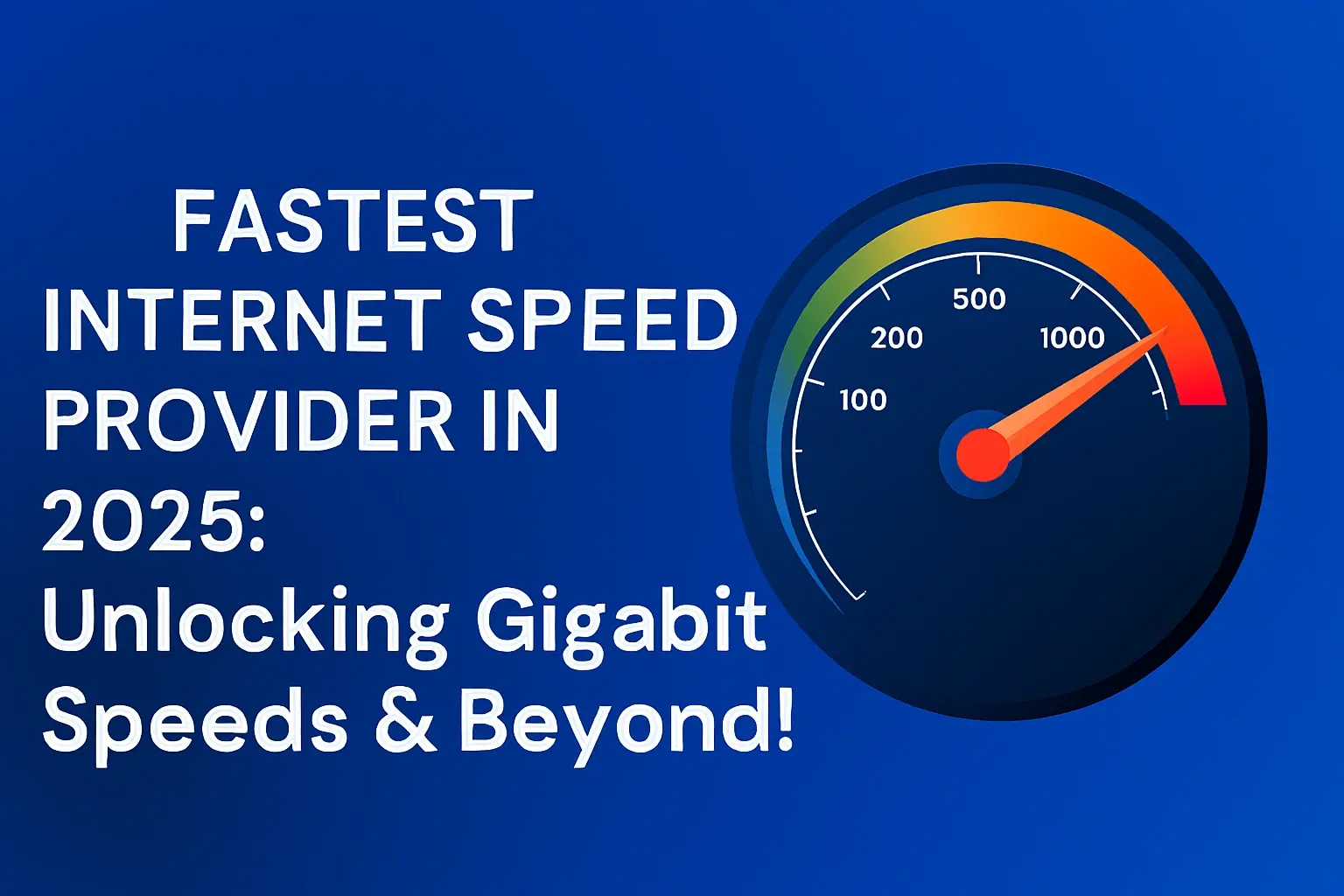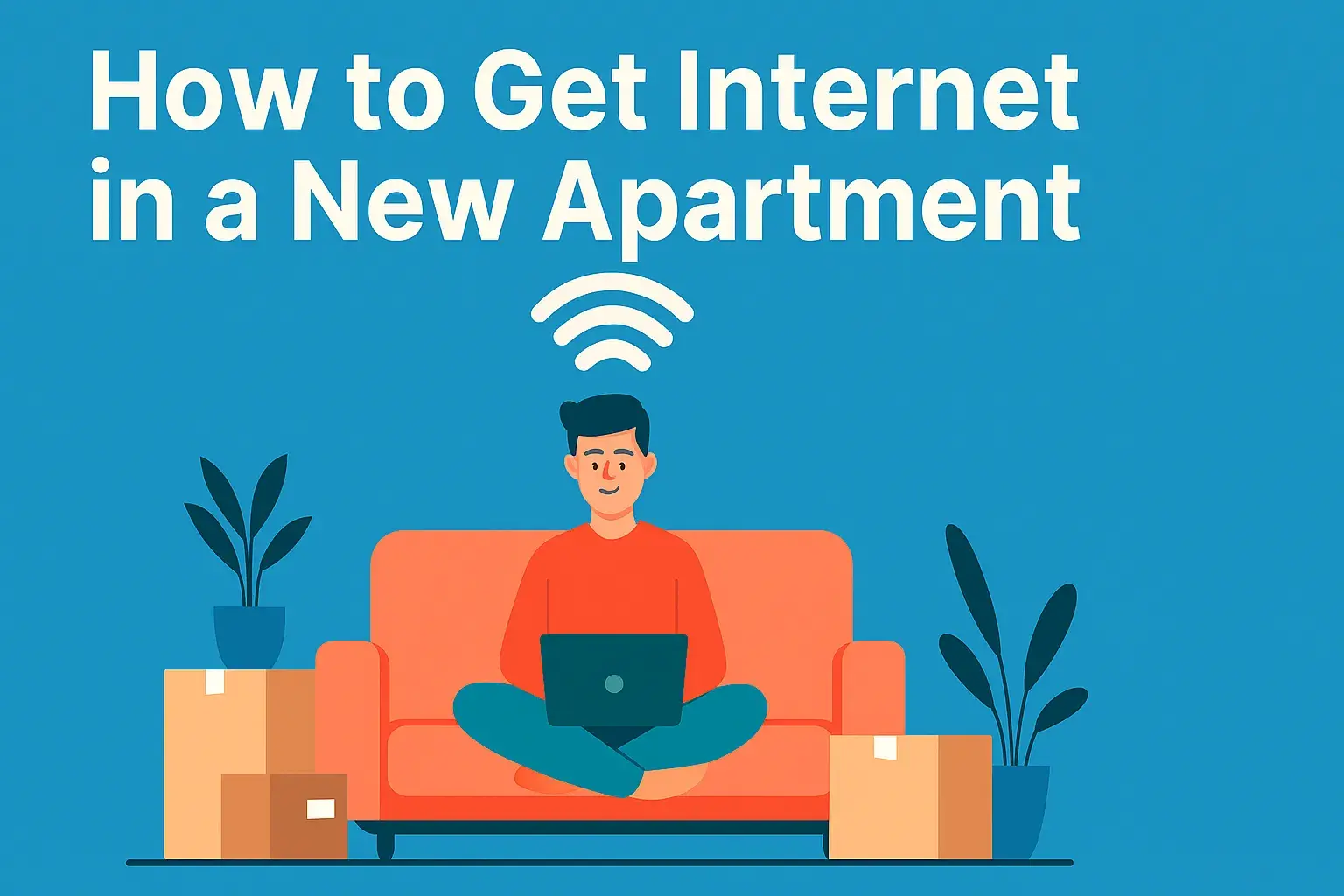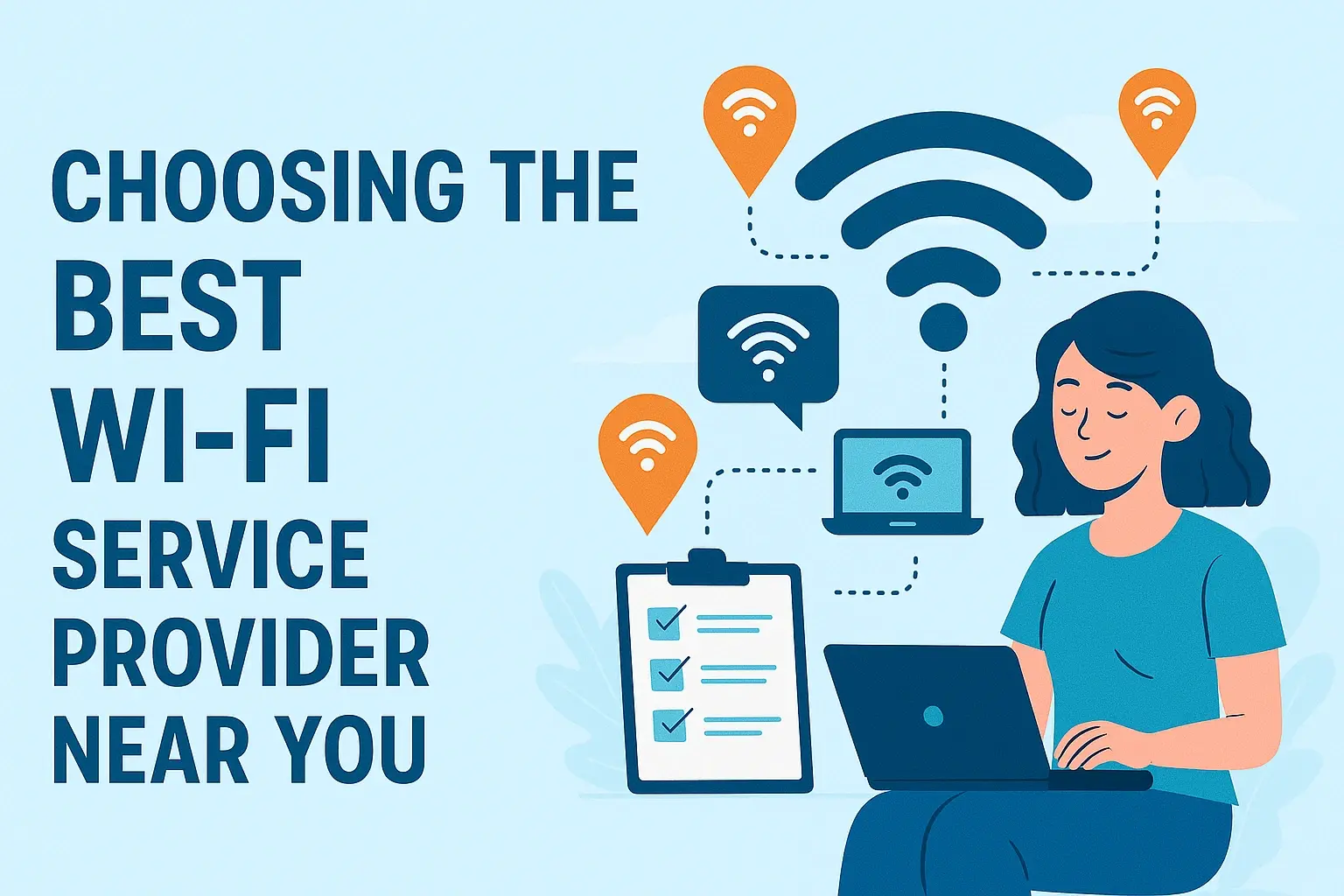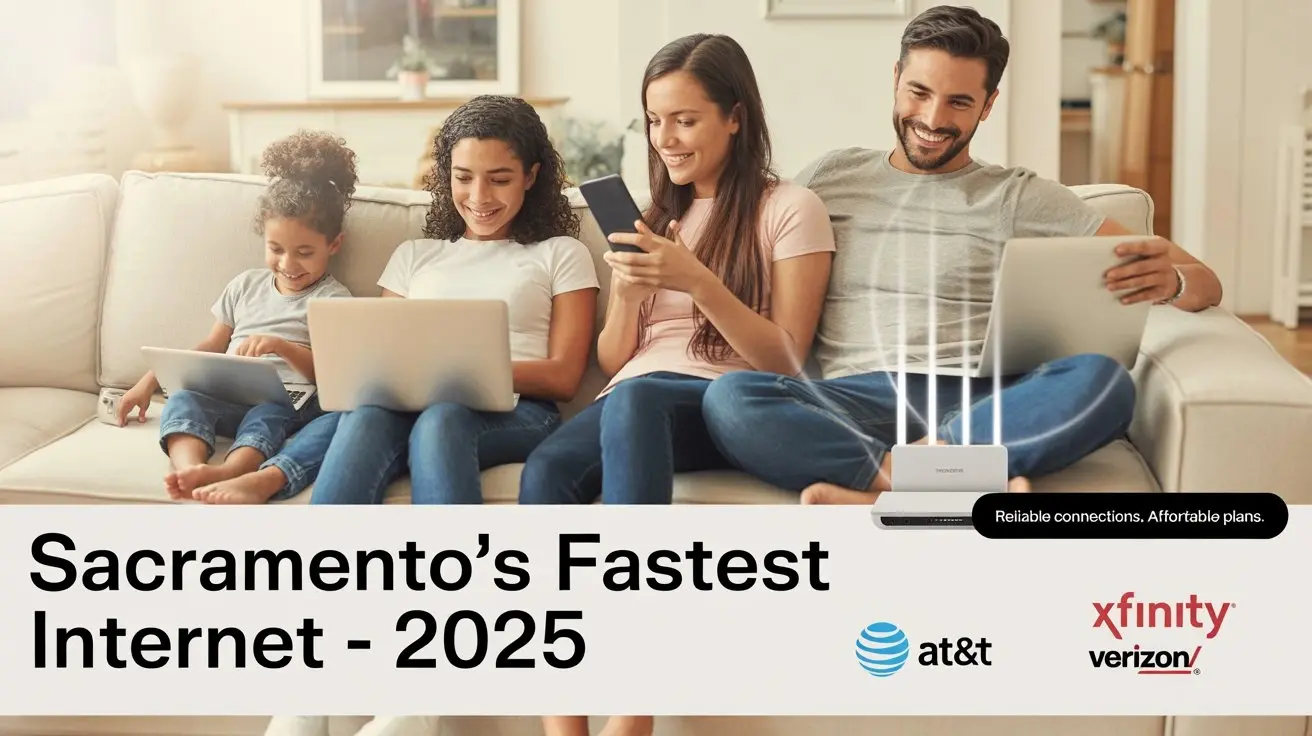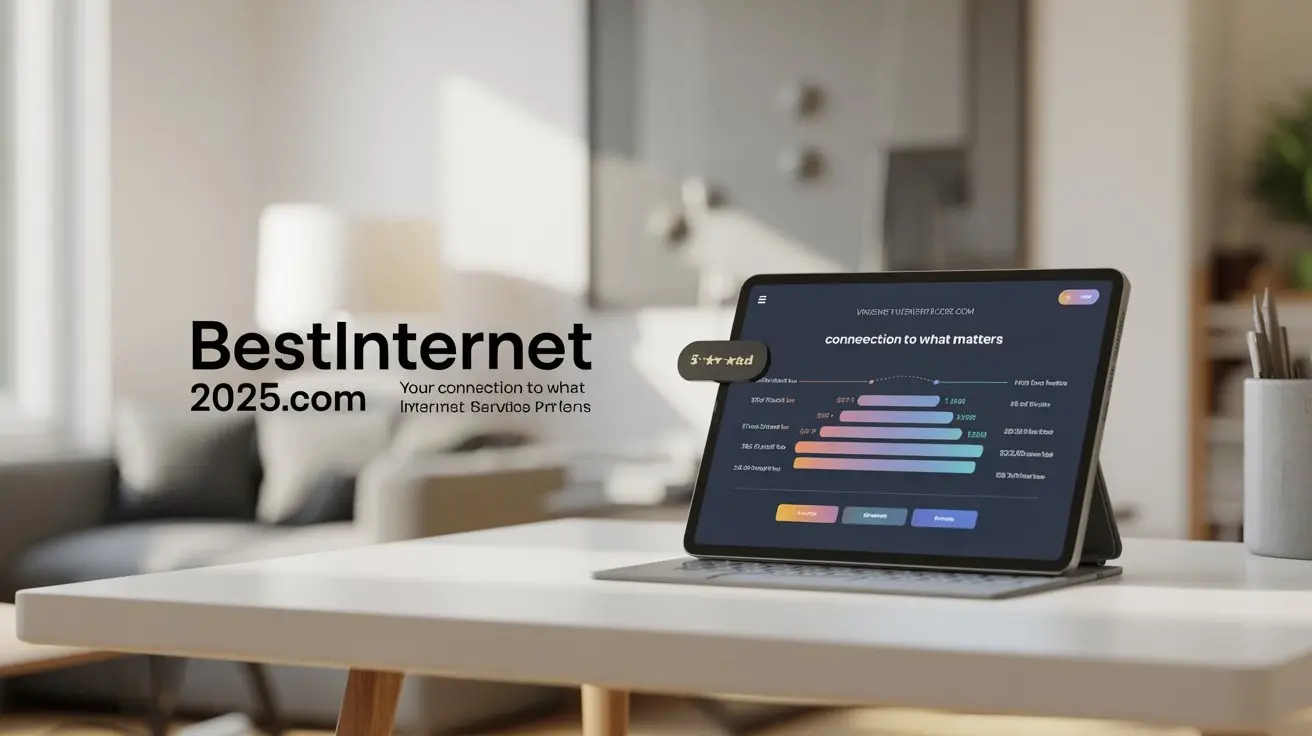How Can You Get Free Internet For The School Year?

Navigating the school year without reliable internet access can be a significant hurdle for students and families. Fortunately, numerous avenues exist to secure free or low-cost internet solutions, ensuring educational continuity and access to vital online resources. This guide explores the most effective strategies for obtaining free internet for the school year.
Understanding the Importance of Internet Access for Education
In the 21st century, internet access is no longer a luxury; it's a fundamental necessity for education. The digital landscape has transformed how students learn, research, collaborate, and even submit assignments. From accessing online textbooks and educational platforms like Khan Academy to participating in virtual classrooms and engaging in remote learning, a stable internet connection is paramount. For the 2025 school year, this reliance is only expected to grow, with many educational institutions integrating digital tools more deeply into their curricula. The digital divide, which refers to the gap between those who have access to modern information and communication technology and those who do not, disproportionately affects low-income families, rural communities, and students with disabilities. Bridging this gap is crucial to ensure equitable educational opportunities for all. Without adequate internet, students can fall behind their peers, miss out on critical learning experiences, and face significant disadvantages in their academic journey. This section will delve into why internet access is so vital and the potential consequences of its absence.
The Evolving Educational Landscape
The traditional classroom model has been augmented, and in some cases, replaced by blended and fully online learning environments. Educational institutions are increasingly adopting learning management systems (LMS) such as Google Classroom, Canvas, and Moodle, which require consistent internet connectivity for students to access course materials, submit homework, and communicate with instructors. Research from the Pew Research Center consistently highlights the growing reliance on the internet for homework and educational research among K-12 students. For instance, a 2023 report indicated that over 90% of teens use the internet for schoolwork, with a significant portion relying on it as their primary source of information. The 2025 school year will likely see an even greater integration of digital tools, including interactive simulations, virtual field trips, and personalized learning software, all of which are internet-dependent.
Impact on Academic Performance
Students without reliable internet access often face significant academic challenges. They may struggle to complete assignments on time, conduct research effectively, or participate fully in online discussions and collaborative projects. This can lead to lower grades, reduced engagement, and a diminished sense of academic self-efficacy. The National Center for Education Statistics (NCES) has reported correlations between home internet access and student achievement, underscoring the direct link between connectivity and academic success. In 2025, with the continued digitization of education, this disparity is likely to become even more pronounced. The ability to access supplementary educational resources, such as online tutoring services or educational videos, is also severely limited for those without internet, further widening the achievement gap.
Essential for Skill Development
Beyond core academics, the internet is a vital tool for developing 21st-century skills. Digital literacy, critical thinking, problem-solving, and collaboration are all honed through online interactions and research. Students learn to navigate complex digital environments, evaluate information from various sources, and communicate effectively in online forums. These skills are not only crucial for academic success but also for future career prospects. As the job market increasingly demands digital proficiency, lacking consistent internet access can put students at a significant disadvantage in preparing for their future careers. The 2025 outlook suggests that even more jobs will require a foundational understanding of digital tools and online communication, making early access to the internet a critical component of future readiness.
Access to Information and Resources
The internet provides an unparalleled gateway to a vast ocean of information and resources. Students can access digital libraries, academic journals, news archives, and educational websites that offer a depth and breadth of knowledge far beyond what is typically available in a physical library or classroom. For students in under-resourced schools or communities, the internet can be their primary source for diverse perspectives and up-to-date information. This access is critical for fostering curiosity, encouraging independent learning, and developing a well-rounded understanding of the world. The 2025 educational landscape emphasizes personalized learning, which often relies on students being able to explore topics of interest independently, a feat impossible without internet access.
Leveraging Government Programs for Free Internet
Several government initiatives are designed to make internet access more affordable and accessible, particularly for low-income households. These programs are often the most reliable and sustainable solutions for securing free internet for the school year. Understanding eligibility requirements and application processes is key to successfully utilizing these resources. In 2025, these programs remain a cornerstone of efforts to bridge the digital divide.
The Affordable Connectivity Program (ACP)
The Affordable Connectivity Program (ACP) is a critical initiative from the Federal Communications Commission (FCC) providing a discount of up to $30 per month on broadband internet service for eligible low-income households. For households on Tribal lands, the discount can be up to $75 per month. Additionally, eligible households can receive a one-time discount of up to $100 for a laptop, desktop computer, or tablet purchased through a participating provider. Eligibility is generally based on income (at or below 200% of the Federal Poverty Guidelines) or participation in other federal assistance programs such as Medicaid, SNAP, SSI, or free and reduced-price school lunch programs. As of early 2025, the ACP continues to be a vital lifeline for millions of Americans. To apply, individuals can visit the official ACP website or contact their internet service provider.
Eligibility Criteria for ACP (as of 2025):
- Household income is at or below 200% of the Federal Poverty Guidelines.
- Participation in certain federal assistance programs, including:
- SNAP (Supplemental Nutrition Assistance Program)
- Medicaid
- SSI (Supplemental Security Income)
- Federal Public Housing Assistance (FPHA)
- Veterans Pension and Survivors Benefit
- National School Lunch Program (NSLP) or the School Breakfast Program (SBP)
- Lifeline program enrollment
- Residents of Tribal lands may have additional eligibility pathways.
How to Apply for ACP:
- Visit the official ACP website (fcc.gov/acp) or the Universal Service Administrative Company (USAC) website.
- Complete the online application. You will need to provide personal information and proof of eligibility.
- Alternatively, you can contact your current internet service provider to see if they participate in the ACP and can help you enroll. Many providers offer plans that, when combined with the ACP discount, become free or significantly reduced in cost.
- Once approved, you can choose a participating internet service provider and apply your ACP benefit to your monthly bill.
Lifeline Program
The Lifeline program is another FCC initiative that provides a discount on monthly telephone service or broadband internet access for qualifying low-income consumers. It is a long-standing program designed to ensure that all Americans can connect to the nation's telecommunications network. While it historically focused on voice telephone service, it now includes broadband internet. Eligibility for Lifeline is similar to ACP, often based on income or participation in specific federal assistance programs. Households can only receive one Lifeline benefit, either for phone or internet, not both. In 2025, Lifeline continues to be a crucial resource, especially when combined with other programs or ISP offers.
State and Local Initiatives
Beyond federal programs, many states and local municipalities have their own initiatives to expand broadband access and affordability. These can include grants for low-income families, public Wi-Fi hotspots, or partnerships with ISPs to offer discounted services. It is advisable to check the websites of your state's public utility commission or department of technology for any available local programs. These initiatives can often supplement federal programs or offer alternative solutions for those who may not qualify for federal aid.
Partnering with Non-Profit Organizations
Numerous non-profit organizations are dedicated to bridging the digital divide and providing essential resources to underserved communities. These organizations often work in conjunction with government programs or have their own initiatives to provide free or low-cost internet access, devices, and digital literacy training. In 2025, their role remains indispensable in supporting students and families.
Digital Inclusion Networks
Many cities and regions have established Digital Inclusion Networks or Coalitions. These are collaborative efforts involving government agencies, non-profits, libraries, schools, and businesses aimed at ensuring all residents have affordable access to broadband, devices, and the skills to use them. Organizations like the National Digital Inclusion Alliance (NDIA) provide resources and support for local digital inclusion efforts. Searching for a "Digital Inclusion Network" in your city or county can reveal local partners and programs. These networks often have specific programs tailored to students returning to school, offering bundled solutions for internet and devices.
Device Distribution Programs
Some non-profits focus on providing refurbished or new computers and tablets to students in need. While these programs may not directly provide internet service, they are crucial for ensuring students have the necessary hardware to utilize any internet connection they secure. Organizations like PCs for People or local charities often run these initiatives. Often, these organizations also partner with ISPs to offer discounted internet plans to recipients of their devices, creating a comprehensive solution.
Digital Literacy Training
Beyond access and devices, digital literacy is essential. Many non-profits offer free workshops and training sessions to help individuals develop the skills needed to navigate the internet safely and effectively, use essential software, and participate in online learning. These programs are invaluable for families who may be new to the digital world or need assistance understanding online educational tools. In 2025, the focus on cybersecurity and responsible online behavior is also a key component of these training programs.
Maximizing School and Library Resources
Educational institutions and public libraries are often overlooked but incredibly valuable resources for free internet access and related support. They are strategically positioned to assist students and families directly. In 2025, these institutions continue to be vital community hubs for digital access.
School-Provided Internet and Hotspots
Many school districts offer Wi-Fi hotspots that students can check out, similar to borrowing a book. These devices create a personal Wi-Fi network using cellular data, allowing students to connect their laptops and tablets at home. Additionally, some schools provide subsidized or free internet plans through partnerships with ISPs, especially for students identified as needing assistance. Families should contact their child's school directly to inquire about available resources, including:
- Loaner Wi-Fi Hotspots: Devices that provide mobile internet access.
- Subsidized Internet Plans: Discounts or free service through school partnerships.
- In-School Internet Access: Extended hours or designated spaces for homework.
Actionable Step: Contact your child's school district's IT department or guidance counselor to inquire about these programs. They often have dedicated staff to assist families with enrollment.
Public Library Services
Public libraries are essential community anchors offering free Wi-Fi access to anyone who visits. Many libraries also lend out Wi-Fi hotspots, laptops, and tablets. Furthermore, libraries often provide computer labs with internet access, printing services, and digital literacy classes. For students needing a quiet place to study with reliable internet, the library is an excellent option. In 2025, libraries are increasingly expanding their digital lending programs and offering more robust tech support. Some libraries even offer mobile hotspots that can be checked out for extended periods, providing a temporary solution for home internet needs.
Services Offered by Libraries:
- Free Public Wi-Fi: Accessible within the library premises.
- Wi-Fi Hotspot Lending: Portable devices for home use.
- Computer and Laptop Access: Publicly available workstations.
- Digital Literacy Training: Workshops on internet use, software, and online safety.
- Printing and Scanning Services: Often available at low or no cost.
School-Issued Devices
While not directly providing internet, many schools now issue laptops or tablets to students. When combined with a home internet connection (even a limited one), these devices ensure students have the hardware necessary for online learning. Some schools also provide data plans or SIM cards for these devices, enabling them to connect to the internet directly, effectively acting as a mobile hotspot.
Exploring Internet Service Provider (ISP) Initiatives
Major Internet Service Providers (ISPs) often have their own programs designed to offer low-cost or free internet services to eligible low-income families. These initiatives frequently align with or complement government programs like the ACP. In 2025, many ISPs continue to offer attractive plans for qualifying households.
Low-Income Internet Plans
Many national and regional ISPs offer specific low-income internet plans. These plans typically provide a set amount of data or a certain speed at a significantly reduced monthly cost. Eligibility for these plans often mirrors that of the ACP or Lifeline programs, requiring proof of participation in federal assistance programs or meeting specific income thresholds. Some ISPs have plans that, when combined with the ACP discount, can result in free monthly internet service.
Examples of ISP Programs (as of 2025):
It's crucial to note that specific program names and offerings can change. Always verify with the ISP directly.
| ISP Name | Program Name/Type | Typical Benefit | Eligibility Basis |
|---|---|---|---|
| Comcast (Xfinity) | Internet Essentials / Internet Essentials Plus | Low-cost internet (often free with ACP), free Wi-Fi modem, professional installation. | Low income, participation in SNAP, NSLP, Medicaid, etc. |
| AT&T | Access from AT&T | Discounted monthly internet service. | Low income, participation in SNAP, NSLP, Medicaid, etc. |
| Spectrum | Spectrum Internet Assist | Low-cost high-speed internet. | Low income, participation in NSLP, SSI, etc. |
| Verizon | Lifeline / Fios Forward | Discounted internet service, often free with ACP. | Low income, participation in federal assistance programs. |
Note: Many of these ISP programs become effectively free when the ACP discount is applied. For example, if an ISP offers a plan for $30/month and the ACP provides a $30 discount, the service becomes free for eligible households.
Bundled Services and Promotions
Some ISPs may offer special promotions or bundled services that can reduce the overall cost of internet access, especially when combined with other programs. It is always worth inquiring about any available discounts or student-specific offers.
How to Find and Apply
- Identify Available ISPs: Determine which internet providers service your area.
- Visit ISP Websites: Navigate to the "Internet," "Low Income," or "Affordability" sections of their websites.
- Check Eligibility: Review the specific eligibility requirements for their low-income programs.
- Apply: Follow the ISP's application process, which may involve providing documentation of your eligibility.
- Combine with ACP: If you qualify for the ACP, inform your ISP. They can apply the ACP discount to your low-income plan, potentially making it free.
Exploring Community and Local Options
Beyond formal programs, local communities often foster unique solutions for internet access. These can range from public Wi-Fi initiatives to informal neighborhood networks. In 2025, community-driven solutions are gaining traction as a way to supplement larger programs.
Public Wi-Fi Hotspots
Many public spaces offer free Wi-Fi, including community centers, public parks, and local businesses. While not ideal for consistent home use, these hotspots can be invaluable for students needing to complete assignments or conduct research outside of school or library hours. Some municipalities are expanding their public Wi-Fi networks to cover more residential areas.
Community Centers and Faith-Based Organizations
Local community centers, YMCAs, Boys & Girls Clubs, and faith-based organizations often provide computer access and internet connectivity for their members and the surrounding community. These locations can serve as excellent study spaces for students. Many of these organizations also partner with schools and non-profits to distribute devices and information about internet access programs.
Neighborhood and Mesh Networks
In some areas, informal networks or community-led mesh networks are emerging. These networks allow neighbors to share internet access, often at a reduced cost or through a reciprocal arrangement. While these can be less reliable than traditional ISP services, they represent an innovative community-driven approach to connectivity. Organizations like the NYC Mesh project are examples of this growing trend.
Local Government Broadband Initiatives
Keep an eye on your local government's initiatives. Many cities and counties are actively working to improve broadband infrastructure and affordability. This might include municipal broadband projects, public-private partnerships, or grants for low-income residents. Checking your city or county's official website, particularly departments related to technology, economic development, or social services, can reveal these opportunities.
Alternative and Creative Solutions
When traditional avenues prove challenging, creative thinking can unlock alternative ways to access the internet. These might involve leveraging existing resources in novel ways or exploring less conventional options. In 2025, resourcefulness remains key.
Mobile Hotspot Data Plans
If you have a smartphone with a data plan, you can often use your phone as a mobile hotspot to connect other devices like laptops or tablets. While this consumes your mobile data allowance, it can be a temporary solution for essential tasks. Some mobile carriers offer unlimited or high-data plans that might be more affordable than a dedicated home internet service, especially when considering the cost of devices and installation fees from traditional ISPs.
Considerations for Mobile Hotspots:
- Data Caps: Be mindful of your data limits. Heavy usage for streaming or large downloads can quickly deplete your allowance.
- Speed: Mobile hotspot speeds can vary significantly depending on network coverage and congestion.
- Cost: Compare the cost of your mobile plan with dedicated home internet options. Some mobile plans are surprisingly competitive.
Free Public Wi-Fi Access Points
Beyond libraries and schools, many businesses offer free Wi-Fi to customers. This includes fast-food restaurants, coffee shops, bookstores, and shopping malls. While not a substitute for reliable home internet, these locations can be used strategically for downloading assignments, checking emails, or conducting quick research sessions. Some municipalities are also installing Wi-Fi in public transportation hubs and parks.
Utilizing University or College Resources (if applicable)
If a student or a family member attends a local university or college, they may have access to campus Wi-Fi networks. While typically restricted to enrolled students, some institutions have guest networks or allow community access in specific areas, such as public computer labs or libraries. It's worth inquiring about campus policies.
Exploring Older or Discounted Devices with Built-in Connectivity
Sometimes, older refurbished laptops or tablets come with built-in cellular modems (WWAN). If these devices can be acquired at a low cost and paired with a basic mobile data plan or used as a hotspot, they can provide a pathway to connectivity. Organizations that provide refurbished devices might have options with these features.
Tips for Securing and Maintaining Access
Securing and maintaining free or low-cost internet access requires diligence and organization. Here are some practical tips to help families navigate the process effectively throughout the school year. In 2025, these strategies remain highly relevant.
Start Early
The application processes for government programs and ISP initiatives can take time. Begin exploring your options well before the school year starts to ensure you have a reliable connection in place when classes begin. Waiting until the last minute can lead to missed opportunities or extended periods without internet.
Gather Necessary Documentation
Most programs require proof of income, participation in other assistance programs, or residency. Having documents like pay stubs, award letters from social services, tax returns, or identification readily available will expedite the application process. For the ACP, this often includes proof of enrollment in programs like SNAP, Medicaid, NSLP, or SSI.
Be Persistent and Follow Up
Don't get discouraged if your initial application is denied or if you encounter bureaucratic hurdles. Follow up on your applications, ask clarifying questions, and explore alternative options. Sometimes, a simple follow-up call or email can resolve issues or provide missing information. Keep records of all communications.
Understand Your Contract and Usage
If you are using a low-income plan or a promotional offer, carefully read the terms and conditions. Understand any data caps, speed limitations, or contract lengths. Monitor your internet usage to avoid exceeding limits, which could result in extra charges or reduced speeds. Many ISPs provide tools to track your data consumption.
Explore Device Options
If you need a device to go with your internet connection, explore options like refurbished computers from reputable sources, school-provided devices, or programs run by non-profits. Sometimes, ISPs offer discounted devices as part of their low-income programs.
Stay Informed About Program Changes
Government programs and ISP offers can change. Regularly check the official websites for the ACP, Lifeline, and your internet provider for updates. Subscribe to newsletters or alerts if available. For instance, understanding the future funding of programs like the ACP is crucial for long-term planning.
Create a Budget (Even for "Free" Services)
While the goal is free internet, some programs might have nominal fees for activation, equipment, or shipping. Factor these potential costs into your budget. Also, consider the cost of electricity to run devices and modems. Planning helps avoid unexpected expenses.
Secure Your Connection
Once you have internet access, ensure it's secure. Use strong passwords for your Wi-Fi network and enable WPA2 or WPA3 encryption. Educate your family about online safety, phishing scams, and the importance of not sharing personal information online. This is especially important for children participating in online learning.
Conclusion
Securing free internet access for the school year is an achievable goal for many families in 2025, thanks to a combination of robust government programs, dedicated non-profit organizations, and proactive initiatives from internet service providers. The Affordable Connectivity Program (ACP) and the Lifeline program remain foundational resources, offering substantial discounts that can render internet service effectively free for eligible households. Supplementing these with the invaluable resources provided by schools and public libraries—from loaner hotspots to free Wi-Fi and computer access—creates a comprehensive support system. Furthermore, exploring low-income plans directly from ISPs, often becoming free when combined with ACP benefits, offers another viable pathway. For those facing unique circumstances, creative solutions like leveraging mobile hotspots or utilizing community Wi-Fi can bridge temporary gaps. The key to success lies in early planning, thorough documentation, persistent follow-up, and staying informed about available resources. By diligently exploring these avenues, families can ensure their students have the essential connectivity needed to thrive academically throughout the school year, effectively closing the digital divide and fostering equitable educational opportunities.
